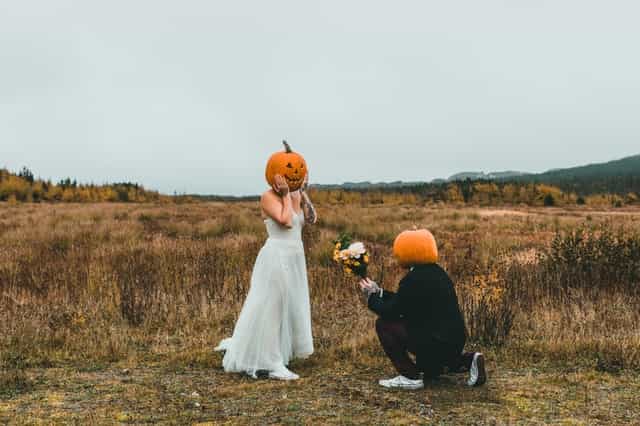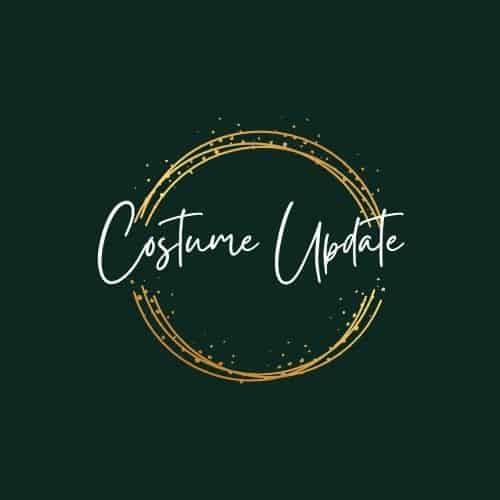I love costumes – they tell the story, they help actors get into character, and they tell the audience something immediately about what’s going on. It is a really exciting day for students actors when they receive their costumes. Students can encounter challenges, however, once they put on their costumes. Students should wear comfortable clothes to rehearsals that will allow them to move around. If the students don’t wear workout-robe-like costumes, it’s less useful for helping them learn choreography and blocking. Performances of actors are affected by their costume choices – for better or worse. We’ll start with the feet and work our way up to the head as we examine how costumes can influence performances.

Aesthetic Effect
The role of costumes and makeup in visibility and aesthetics extends beyond setting and character. Stage lighting can easily obscure an actor’s features, so makeup is essential to ensuring that his features are easy to see. Costume designers perform a similar function because they do not use too pale, intricate, or long colors and designs so their audience can distinguish them.
Character
Costumes and makeup can give the audience crucial information about a character at a glance. An unkempt, dirty, and wrinkled character’s clothes, a five-o-clock shadow on his beard, and mussed hair, for instance, may represent a character who is depressed. As a result, the play becomes more realistic and believable.
Setting
Whether the actors wear Renaissance period garb or 1960s styles, the costume is an important indicator of the time and place of the play. In addition to hairstyles and makeup that match the play’s setting, some concessions might be required regarding makeup to avoid wash-out.
When designing for production, script research is essential and begins with a thorough reading of the script. Despite being a creative process, costume design is still governed by the script, including period information and functional elements. Through the script, the customer begins the creative process. Therefore, the costume designer needs to read the script more than once since knowing it is a necessity for the correct execution of a costume.
Even though the script is loaded with relevant material for the costume designer, the next component of their trade deviates from what’s in the script. It relies on the creative vision or concept of the director. The director’s concept for the production is based on what the playwright wrote. When Mervin LeRoy was involved in the adaptation of The Wizard of Oz, “[his] philosophy was to treat the source matter like a child” (Scarfone & Stillman, 2013, p. 22). From a child’s perspective, he looked at how a child would see the events of the book when translated to screen. Dorothy was originally depicted as titanium blonde and heavy makeup. Judy Garland, as Dorothy Gale, was portrayed in Scarfone & Stillman (2013) with little makeup and a childish hairstyle due to the director’s discretion.

Mood and color
The mood and color of a room Characters should be dressed based on the play’s mood when costuming them. The costume designer must know the plot of the play and what’s happening in the production to dress the character according to the mood of the production.
To convey a character’s mood better in color, one thing that helps is establishing the mood. Different colors represent different aspects of a scene and, when placed on a character, help the audience understand more about the feel of that particular scene. Even though color can carry essential meaning, it can also affect people’s behavior, cognition, and effect (Elliot 2014, para. Therefore, when character or production colors are chosen for a play, audience members can feel certain about them

Theatrical costume
A “costume” is a particular style of clothing worn by a performer in a theatrical performance or a film or television production to represent a certain character. Costumes are important when it comes to depicting characters and context and providing information regarding historical eras, geographical locations, and the time and season of a theatre performance. For example, Commedia dell’arte characters, like Harlequin or Pantaloon, wear costumes that suggest an exaggerated aspect of their characters.

Children costume
Children can also use costumes as an avenue for role-playing and exploration. Among the many possible costumes are pirates, princesses, cowboys, and superheroes, which can be found online. They may also wear the uniforms of common professions, such as nurses, police officers, or firefighters, or wear those of zoos or farms. It is common for young boys to favor costumes that reinforce stereotypes of being male, whereas young girls typically prefer costumes that reinforce stereotypes of being female.
Industry
Professional-grade costumes are typically designed and produced by costume companies that create unique costumes. Many of these companies have been in existence for more than 100 years and continue to provide high-quality costumes to individual clients.
Renting and selling costumes for trade are performed by professional costume houses. For example, a mascot company, a film costume company, a TV costume company, a theatrical costume company, etc., are all included here.
There is a wide selection of costumes on rent at larger costume companies.
Costumes can be designed from scratch by customers with clients. The costumes are created according to the specifications provided by the client.
What role does costume design play in a character’s appearance?
Designing a costume is the same as designing a character’s identity. Each part of this visual presentation, from hair to makeup to accessories to clothing, is carefully chosen to provide hints about a character and their world.
Are you telling a story through costumes?
In addition to costumes, directors have many other tools to tell stories. Using costumes on-screen helps actors transform into new and believable characters by conveying details about their personalities. Many people confuse costume design with fashion design; however, these two fields and their objectives are very different.
How do you know what to do about costumes and makeup?
A character’s costume and makeup influence first impressions of a character. For example, unkempt, dirty, and wrinkled clothing, a five-o’clock shadow on the beard, and mussed hair may indicate a character is depressed.
What are the benefits of acting in costumes?
Costume for a theatrical performance. Costumes are important when it comes to depicting characters and context and providing information regarding historical eras, geographical locations, and the time and season of a theatre performance.
More Costume Post

Hogwarts Slytherin costumes come in two varieties. Slytherin House students are required to wear the uniform. Outfit includes sleeves, sweaters, robe, and other clothing needed for Slytherin House.

Why not make a DIY Batwoman costume from the TV show if you look for an awesome superhero costume for women. Even though it is relatively easy to make a Batwoman costume, it may seem not very comforting.
